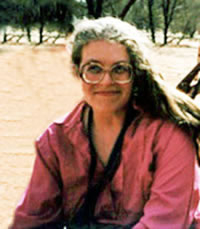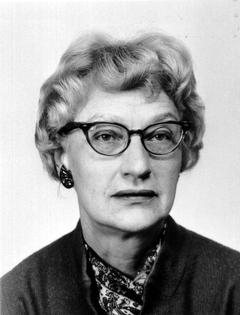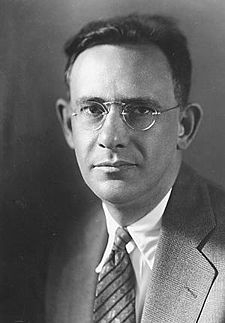As an institution, Yale has recently renewed its commitments to increasing diversity and inclusiveness in our community through several key initiatives. One of these initiatives involves representations of diversity throughout our campus itself. In response to spirited conversations among students, faculty, alumni, and staff regarding the art and symbols that surround us and the people honored as namesakes for our buildings and residential colleges, President Salovey has appointed committees to address these issues.
Within the Yale linguistics department, we have been engaged in a number of efforts to encourage and support the involvement of people of diverse backgrounds in the life of our community. As part of these efforts, we have begun to reflect on the iconography in our physical spaces, where for the last several years, we have showcased pictures of philologists and linguists who spent time at Yale in the 19th and early 20th centuries. These include Leonard Bloomfield (1887-1949), Mary R. Haas (1910-1996), Edward Washburn Hopkins (1857-1932), Charles Lanman (1850-1941), Edward Salisbury (1814-1901), Edward Sapir (1884-1939), Edgar Sturtevant (1875-1952), and William Dwight Whitney (1827-1894). While these scholars made outstanding contributions to our understanding of language, we have increasingly felt that they do not represent the ethnic and gender diversity of our current department. Moreover, linguists in our department today carry out research using a variety of approaches and perspectives that did not exist at the time these scholars (primarily philologists, historical linguists, and structural linguists) conducted their work.
This topic arose during departmental climate conversations held in the fall of 2014 as part of a larger Graduate School initiative. In 2015-2016, we specifically began to discuss the ways in which we could update the existing iconography to remedy the mismatch in gender, ethnicity, and approach to the study of language, and in so doing, to create an environment that would better characterize our current department and foster an atmosphere of inclusiveness. We decided that we would keep the existing portraits and, in addition, we would honor a more diverse group of people by naming some of the common rooms in our department (lounges, meeting rooms, labs, etc.) after them. We formed a committee that made and solicited suggestions, compiled a list of people we could honor, and encouraged discussion about our goals and how they could best be achieved. As a result of this process, we decided to look for a set of people, all deceased, who embodied diversity, whose work contributed to progress in some aspect of linguistics, and who had an affiliation with Yale (as faculty members or alumni) or with Connecticut.
After considering many suggestions, the committee came up with a short list and asked for a vote from our students (both graduate students and undergraduate majors), postdocs, and faculty. With this input from the department, the committee selected the final honorees. We are pleased to announce that we now have installed placards on six common rooms in our department honoring the following individuals:





